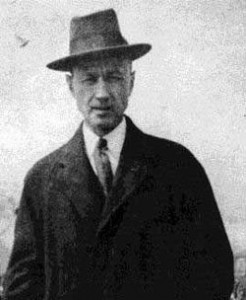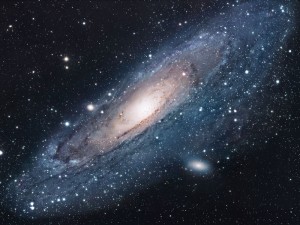We’re an odd bunch, those of us who have the taste for the eccentric music of Charles Ives, the amateur composer and insurance salesman who independently developed (ahead of everyone else) virtually every musical innovation of the 20th century. Unrecognized and unperformed during most of his lifetime, he composed bizarre concoctions of polyrythms, polytonality, quarter tones, and tone clusters, including aleatoric elements, long before anyone else dreamed of doing so. It was half a century, for example, before his unbelievably complex fourth symphony was performed, and it still sounded “futuristic” to those who finally got to hear it. But, at the same time, Ives’ music was extremely American, saturated with popular melody, brashness, and unabashed sentiment. It’s real affinity is not with the antiseptic “art music” of the European schools, but with the experimental jazz and rock music that later emerged from the American chop suey.
Ives did not produce much music after 1911. Few of his orchestral works were ever performed, and his health was precarious. But he did work continuously on a last symphony, which was to develop and extend ideas in the fourth. This is the “Universe Symphony”, a work which follows twenty simultaneous musical lines; each moving in a separate meter, only coinciding on downbeats eight seconds apart. The ambition and complexity of such a work beggars description. It was meant to be a sort of science fictional, metaphysical magnum opus, something like Olaf Stapledon’s fiction in music. Its three movements are labeled: Part 1, “Past: Formation of the waters and mountains”, Part 2, “Present: Earth, evolution in nature and humanity”, Part 3, “Future: Heaven, the rise of all to the Spiritual”. Ives described it to friends as “a striving to … trace with tonal imprints the vastness, the evolution of all life … from the great roots of life to the spiritual eternities, from the great inknown to the great unknown.”
The work was not quite completed: the manuscript left various segments unassembled. It was not until the 1990’s that musicians worked up the nerve to assemble and perform it. Three separate reconstructions were made, by David Gray Porter in 1993 (partial), Larry Austin in 1994, and Johnny Reinhard in 1996. The recordings have always been too expensive for me to afford, though I’m a pretty devoted Ivesian. I recently obtained a copy of the Larry Austin version, and I saved it to be my first new listening item for 2009. From what I’ve read, the Austin and Reinhard versions are very different. I have the impression that the Reinhard version is now generally favoured. I can only quote this from a review by James H. North:
Austin’s version runs for 36 minutes, Reinhards for at least 65. The gap lies mostly in Renhard’s “Pulse of the Cosmos,” half an hour of pure percussion, much of it a slowly beating single drum. In the Austin version, that music-“Life Pulse Prelude”- is overlapped at the first Earth Chord, a rough equivalent of Reinhard’s “Earth Alone,” and continues throughout the “Past” section; it is also faster, of which more below. Both divide the score into multiple orchestras: Austin calls then Heavens Orchestras A, B, C and D; Life Pulse Percussion Orchestra; Rock Formation Orchestra; and Earth Chord Orchestra. Reinhard names the Earth, Heavens, and Pulse orchestras. Both versions of the Pulse music have complex rhythmic elements we now associate with minimalism, especially Steve Reich: instruments in the percussion orchestra operate at different meters, coming into phase and then drifting out again. There are also microtonal features, which can make the low brass seem badly out of tune — in both recordings – until one gets the drift of what is going on.
I’ll try to obtain the Reinhard version to compare the two. But I must say that the Austin version in no way disappointed me. I listened to the whole thing in a virtual trance. It seemed to me that the piece was starting from the point that the enigmatic fourth symphony ended, taking Ives on a kind of 2001: A Space Odyssey journey into alien landscapes. Ive’s musical jokes and penchant for quotations were left behind, and what was left was a very serious beauty, albeit the cold kind of beauty that a physicist can see in a model of the first instant of creation, or that I’ve experienced walking on the shores of the Arctic Ocean.


0 Comments.